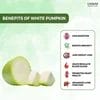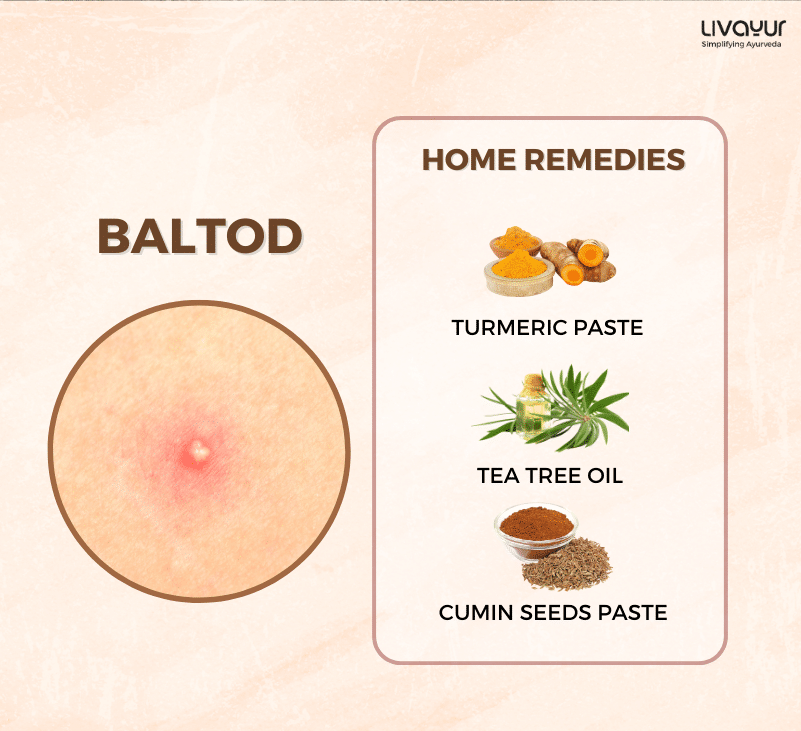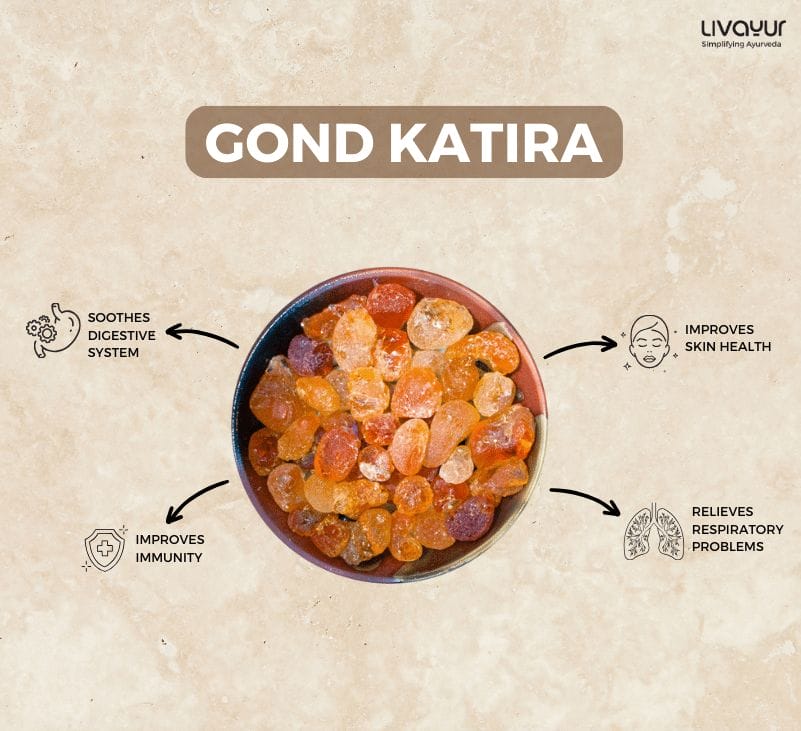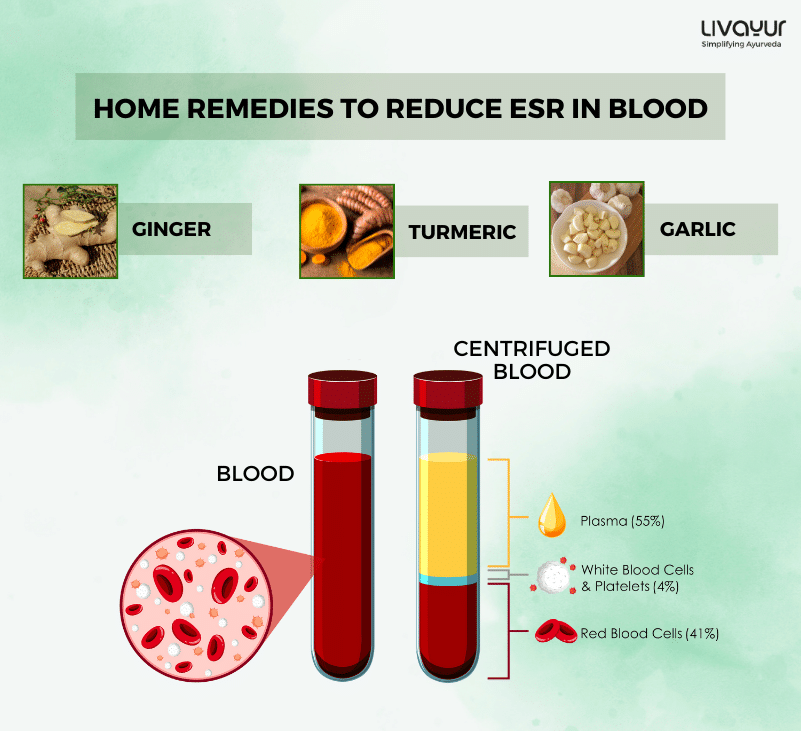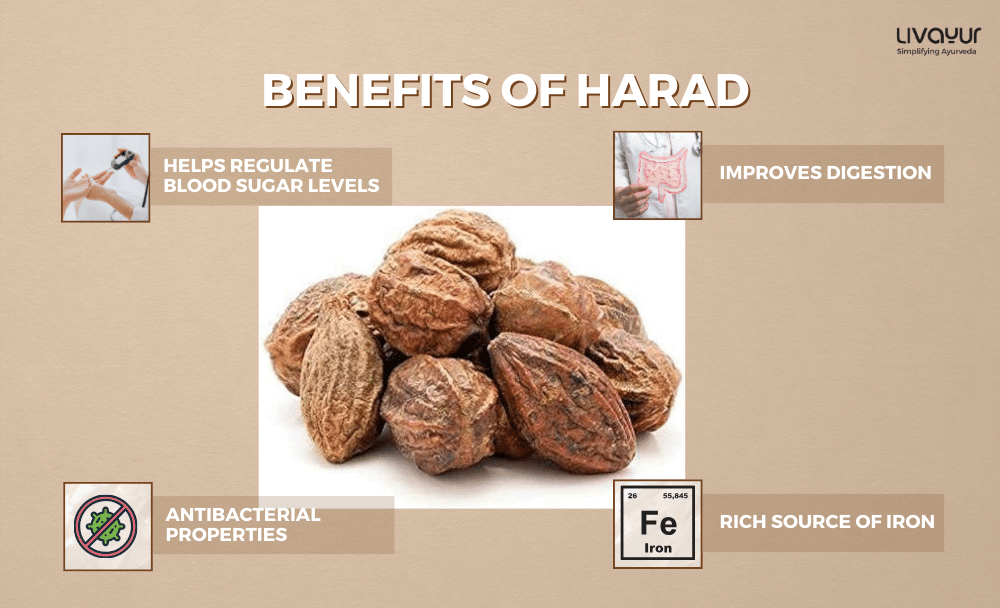
When it comes to exploring natural remedies for health concerns, the world of traditional medicine never fails to intrigue. One such herbal gem that has garnered attention for its potential health benefits is Harad, also known as Terminalia chebula. This small yet mighty fruit has been used for centuries in Ayurvedic and traditional medicine practices. Harad offers a wide range of therapeutic properties.
In this article, we will delve into Harad’s benefits, uses, potential side effects, and proper consumption methods. We also shed light on its rich medicinal heritage and modern-day applications. So, let’s discover the wonders of Harad and unlock its secrets for optimal well-being.
What is Harad?
Harad is a fruit that grows on the Terminalia chebula tree. This small, deciduous tree belongs to the Combretaceae family and is highly regarded in Ayurveda. Harad has a unique appearance with a round shape, a greenish-yellow color when unripe, and a dark yellow to black hue when fully ripe.
It has a slightly sour taste, which is why people often refer it to as the “King of Medicines” in Ayurveda due to its numerous medicinal properties. The fruit gets harvested when ripe and dried further to enhance its therapeutic potential. It is available in various forms, including whole fruit, powdered form, capsules, and extracts, making it convenient for different medicinal applications.
Nutritional Value of Harad
| Nutrient | Amount per 100g |
| Calories | 249 |
| Carbohydrates | 62.3 grams |
| Dietary Fiber | 42.8 grams |
| Protein | 3.7 grams |
| Fat | 0.4 grams |
| Vitamin C | 47.5 mg |
| Calcium | 268 mg |
| Iron | 1.7 mg |
| Magnesium | 48 mg |
| Phosphorus | 34 mg |
| Potassium | 2,116 mg |
What are the health benefits of Harad?
Harad is renowned in Ayurveda for its medicinal value. Because of its extraordinary health benefits, it is also called the King of Medicine. Let us explore some of the harad benefits.
1. Anti-diabetic
Harad has shown promising anti-diabetic properties by helping regulate blood sugar levels. It is a potential natural remedy for managing diabetes. [1]
2. Anti-inflammatory
The bioactive compounds present in Harad possess potent anti-inflammatory properties. This makes it a valuable herb in addressing inflammatory conditions like joint pain. [1]
3. Antibacterial
Harad exhibits b antibacterial properties, making it effective against bacterial infections. It may help combat harmful bacteria and promote a healthy immune system. [1]
4. Improves digestion
Benefits of eating harad aid in stimulating the digestive system, relieving constipation, reducing bloating, and improving overall digestive function. [1]
5. Improves skin tone
Harad benefits for skin are well-known. Harad can have a positive impact on skin health. It contains antioxidants that safeguard the skin from oxidative stress, promoting a youthful and radiant complexion. [1]
6. Treats anemia
Harad is a rich source of iron, which promotes the production of red blood cells. Regular consumption of Harad may help alleviate symptoms of anemia. [1]
7. Anti-carcinogenic
The phenolic compounds found in harad exhibit anti-cancer properties. Research indicates that harad fruit extract may inhibit the growth and proliferation of cancer cells, as well as induce cell death in various types of cancer, including breast, bone, and prostate cancers. [3]
8. Relives Stomach Issues
Studies have shown that harad is effective as a laxative, aiding in complete bowel evacuation. Also, eating harad fruit might make food stay in the stomach for a bit longer before moving to the intestines, thus aiding digestion. [3]
9. Hair Health
Harad benefits for hair are well-known. It is known for its ability to combat hair loss and stimulate hair growth. Rich in vitamin C, iron, manganese, selenium, and copper, it offers essential nourishment to the scalp. Research further suggests that Harad effectively manages dandruff. [4]
What are the uses of Harad?
Let’s explore how Harad finds is beneficial through its therapeutic properties:
1. Laxative
Harad is well-known for its laxative effects, which can help promote regular bowel movements. Its natural compounds stimulate the digestive system and aid in easing gastrointestinal discomfort. [1]
2. Antifungal
The potent antifungal properties of Harad make it a valuable resource in combating fungal infections. [1]
3. Increases longevity
The extract of Harad can be an exceptional heart tonic, supporting cardiovascular health and enhancing longevity. [1]
4. Treating piles
Benefits of eating harad aid in stimulating the digestive system, relieving constipation, reducing bloating, and improving overall digestive function. [1]
5. Relieves asthma
Harad has been utilized in Ayurveda for managing respiratory conditions like asthma. Its bronchodilatory properties may help relax the airways, improve breathing, and reduce asthma symptoms. [1]
6. Antioxidant
The potent antioxidants and flavonoids found in Harad enhance memory capacity, focus, concentration, calmness, and alertness in individuals. Serving as a brain tonic and stimulant, Harad supports cognitive function. [5]
What are the uses of Harad?
Let’s explore harad uses and find how it is beneficial through its therapeutic properties:
1. Laxative
One of the most common uses of harad is as a laxative. Harad is well-known for its laxative effects, which can help promote regular bowel movements. Its natural compounds stimulate the digestive system and aid in easing gastrointestinal discomfort. [1]
2. Antifungal
The potent antifungal properties of Harad make it a valuable resource in combating fungal infections. [1]
3. Increases longevity
The extract of Harad can be an exceptional heart tonic, supporting cardiovascular health and enhancing longevity. [1]
4. Treating piles
Harad finds use for the treatment of piles, also known as hemorrhoids. Its anti-inflammatory and astringent properties can help reduce swelling, alleviate pain, and promote healing in this common condition. [1]
5. Relieves asthma
Harad has been utilized in Ayurveda for managing respiratory conditions like asthma. Its bronchodilatory properties may help relax the airways, improve breathing, and reduce asthma symptoms. [1]
6. Antioxidant
The potent antioxidants and flavonoids found in Harad enhance memory capacity, focus, concentration, calmness, and alertness in individuals. Serving as a brain tonic and stimulant, Harad supports cognitive function. [5]
How to consume Harad?
Here are some common ways to incorporate Harad into your daily routine:
1. Whole fruit
You can consume the dried whole fruit of Harad directly. Start by removing the seeds and chewing on the fruit, allowing the juices to mix with saliva for better digestion. This traditional method allows for a slow release of its therapeutic compounds.
2. Powdered form
Harad powder is widely available, making it easy to incorporate into various recipes and beverages.
3. Capsules
Harad is also available in capsule form, which offers a convenient and standardized dosage. Follow the recommended dosage or contact a healthcare professional for guidance.
4. Extracts
Harad extracts are another option. These concentrated forms can be added to water or other liquids as directed. Again, remember to follow the recommended dosage provided by the manufacturer or seek advice from a healthcare professional.
How to use Harad?
Here are some points to remember to use harad. [1]
- The usage of harad can vary depending on the specific health concern being addressed.
- Harad is commonly available in powdered form. You can ingest with warm water to maximize the harad powder uses and benefits.
- Harad can also be converted into a paste form for topical use, particularly for skin-related issues.
The appropriate usage, to harness the harad benefits, should be based on the intended purpose and under the guidance of a qualified Ayurvedic practitioner.
What are the side effects of Harad
Harad side effects are generally not known to be many with it being safe for consumption when used in appropriate amounts. However, it is essential to be aware of the following side effects that may occur. [1]
1. Gastrointestinal issues
In some cases, the consumption of harad may lead to gastrointestinal discomfort, like bloating and gas. Individuals with sensitive digestive systems may be more prone to experiencing these symptoms.
2. Diarrhea
Harad possesses natural laxative properties. When consumed in excessive amounts, it may lead to diarrhea. The effect can be due to the herb’s ability to promote bowel movements and cleanse the digestive tract.
3. Dehydration
Prolonged or severe diarrhea resulting from harad intake may contribute to dehydration. It is crucial to maintain adequate fluid intake to overcome potential fluid loss.
4. Allergic reactions
Although rare, some individuals may exhibit allergic reactions to harad. Symptoms may include itching, rash, or swelling.
5. Interactions with Medications:
Harad may interact with certain medications, affecting their absorption or efficacy. Individuals taking prescription medications should consult with their healthcare provider.
Precaution to remember when consuming Harad
Harad is generally safe when used in moderation, but individual responses may vary. Here are some key precautions to bear in mind.
1. Consult a healthcare professional
Prior to initiating any harad supplementation, consult with a qualified healthcare professional, especially if you are pregnant, nursing, have pre-existing medical conditions, or are taking prescription medications.
2. Monitor dosage
Adhere to recommended dosage guidelines and avoid excessive consumption. Harad possesses natural laxative properties, and overconsumption may lead to gastrointestinal discomfort.
3. Check blood sugar levels
Individuals with diabetes or those regulating blood sugar levels through medication should monitor their glucose levels regularly.
4. Pregnancy and breastfeeding
Pregnant or breastfeeding individuals should exercise caution and seek professional advice before using Harad.
Ayurveda and Harad
Harad plays a vital role in Ayurveda, where practitioners believe it to balance the three Doshas – Vata, Pitta, and Kapha. When consumed with ghee, it helps balance Vata Dosha.
Combining Harad with rock salt helps balance Kapha dosha, which is related to water and stability. Harad is recommended with sugar to balance Pitta Dosha, associated with fire and metabolism. By harmonizing the doshas, Harad ignites the internal fire in the body, promoting a sense of vitality and energy. [1]
FAQs
1. Can we take harad daily?
Yes, you can consume harad daily. However, it is important to exercise moderation. The recommended dosage may vary depending on age, health condition, and individual tolerance. Consulting with a healthcare professional before incorporating harad into your daily routine is advisable.
2. Can Harad manage bacterial infections?
Harad demonstrates antibacterial activity against various infectious bacteria. Additionally, it has shown effectiveness against Helicobacter pylori, a bacterium associated with stomach ulcers, gastritis, and stomach cancer. Moreover, Harad seeds may inhibit the growth of bacteria like Staphylococcus aureus and Shigella, which are known to cause digestive tract infections. [2]
3. What does harad contain?
Harad contains a variety of bioactive compounds, including tannins, chebulagic acid, chebulinic acid, ellagic acid, and flavonoids. These compounds contribute to its antioxidant, anti-inflammatory, and laxative properties. These elements make harad a valuable herb in traditional medicine for promoting digestive health.
4. Which harad is used for dark circles?
Harad, specifically haritaki (Terminalia chebula), finds use in traditional Ayurvedic practices for addressing dark circles. Its antioxidant properties may help reduce oxidative stress and inflammation to lead to an improved skin health. However, individual responses may vary. It is suitable to consult a skincare professional or healthcare practitioner for personalized advice.
5. What are the disadvantages of harad?
While Harad is generally considered safe when used in moderation, there are potential disadvantages to be aware of:
• Gastrointestinal distress
• Diarrhea
• Dehydration
• Allergic reactions
• Interaction with medications
Where to buy Harad and Its Prices
| Online shop | Price |
| Krishna’s Herbal and Ayurveda | 100g (Rs 80) |
| IndianJadiBooti | 50g (Rs170) |
| Triphal | 100g (Rs 75) |
| Amazon | 500g (Rs 370) |
Conclusion
Harad is known to have immense health benefits. Harad is a remarkable herbal remedy with a long-standing reputation in traditional medicine. The extensive list of Harad health benefits, ranging from its anti-diabetic and anti-inflammatory properties to its positive effects on digestion and skin health, make it a valuable addition to natural healthcare practices.
Consulting a healthcare professional is crucial to ensure personalized guidance and address any specific health concerns. So, embrace the wonders of Harad and unlock its secrets for optimal well-being.
Disclaimer:
The information provided here is not intended to replace professional advice or treatment.
References:
- Health Benefits of Terminalia Chebula and Rosa Canina. 05 February 2019
- A comprehensive review on the diverse pharmacological perspectives of Terminalia chebula Retz. Published online 2022 Aug 14.
- Bag A, Bhattacharyya SK, Chattopadhyay RR. The development of Terminalia chebula Retz.(Combretaceae) in clinical research. Asian Pacific journal of tropical biomedicine. 2013 Mar 1;3(3):244-52.
- Effect of Haritaki (Terminalia Chebula Retz) with Takra in Dandruff. June 2018. Journal of Ayurveda and Integrated Medical Sciences 3(3). DOI: 10.21760/jaima.v3i3.12873
- Medicinal Value of Underutilized Crop-Harad. November 2023. Authors: Ankita Chib, Jagmohan Singh, Shivani Verma, Sukomaljot Kour
